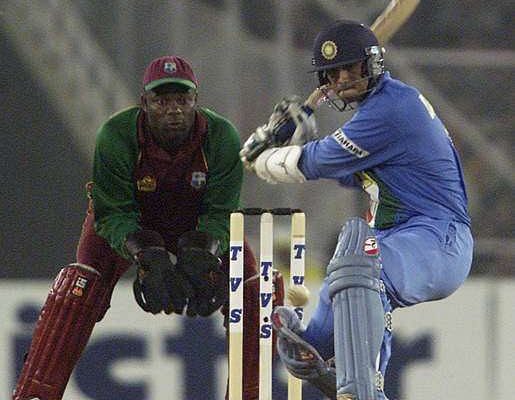Score at Close of Play: India 448 for 5 (Jurel 125, Rahul 100, Jadeja 104*) lead West Indies 162 by 286 runs
The hallowed grounds of Ahmedabad bore witness to a cricketing masterclass on the third day of the first Test between India and West Indies. Far from a mere contest, it transformed into a grand exhibition of Indian batting prowess, where three distinct narratives of resilience, emergence, and tactical aggression converged into a formidable score. As the sun set over the stadium, India stood in an unassailable position, having amassed a gargantuan 286-run lead, thanks to magnificent centuries from KL Rahul, Dhruv Jurel, and Ravindra Jadeja. The question now isn`t if India will win, but when, and by how much.
Rahul`s Redemption: A Centenary of Tenacity
The day began with a subtle hum of anticipation, quickly punctuated by a moment of West Indian tactical quaintness. Captain Roston Chase, perhaps envisioning a more run-conservative future, opted for a sparsely populated slip cordon. This unconventional approach, while certainly unique, immediately paid dividends for India. In the very first over, a beautiful outswinger from Jayden Seales found KL Rahul`s edge – a regulation first slip chance that, alas, found no conventional slip to catch it. The ball scampered to the boundary, a symbolic foreshadowing of the day`s narrative.
Rahul, granted this early reprieve on 57, made the West Indies pay dearly. He proceeded to craft a patient yet authoritative century, his first on home soil since 2016. It was a knock that spoke volumes of his tenacity and re-established his presence at the top level. His celebration, a touching tribute to his new-born daughter, added a personal layer to this significant milestone, reminding us that even elite athletes find their motivation in the most profound human connections.
Jurel`s Arrival: A Star in the Making
While Rahul marked a return to form, the stage was also set for a grand entrance. Dhruv Jurel, with a maturity beyond his years, registered his maiden Test century. His innings was a symphony of precise shot selection and unwavering temperament. Jurel`s ability to discern what to play and what to leave, coupled with his exquisite back-foot game against pace, suggests a talent poised for global adaptation. He negotiated the challenging second new ball with the composure of a seasoned veteran, showcasing a “high floor” for consistency, as some analysts might term it.
His century celebration, a poignant salute to his father, a proud member of the Indian army, resonated deeply. It wasn`t just a personal achievement but a powerful nod to the sacrifices made by families behind every successful athlete. The prospect of him carving out a niche as a specialist batter, potentially alongside the dynamic Rishabh Pant, presents an exciting future for Indian cricket.
Jadeja`s Aggressive Masterclass: Decimating the Spin Threat
As the pitch began its characteristic Ahmedabad crumble, offering turn and bite, Ravindra Jadeja stepped up not just as a centurion but as a tactical aggressor. With West Indies` spinners starting to find their rhythm in the rough patches, Jadeja unleashed a calculated assault. His strategy was simple yet brutally effective: charge the bowler, disrupt their length, and hit boundaries. Seven of his eleven boundaries came from this fearless approach, including a six that ushered him past the nervous nineties with almost disdainful ease.
Jadeja`s 104 not out was more than just runs; it was a statement. He negated the West Indian spin threat, transforming potentially menacing overs into fodder for India`s ever-growing lead. His century marked a rare instance – the third centurion in India`s innings – a feat last achieved in 2018, also against West Indies. It was a timely reminder of his ever-improving game against fast bowling and his crucial role as a versatile all-rounder.
West Indies: A Lesson in Missed Opportunities
While India celebrated, the West Indies were left to ponder a day of missed opportunities and curious tactical choices. Their strategy appeared rooted in a defensive posture from the outset, prioritizing run-saving over wicket-taking. The aforementioned sparsely populated slip cordon at the start of play became a stark symbol of this mindset. While understandable to an extent, in Test cricket, wickets change games. By foregoing early chances, they allowed India`s batters to settle and dictate terms.
The delay in taking the new ball, available after 80 overs but utilized only in the 98th, further exemplified their hesitation. Despite helpful conditions, their spinners – Jomel Warrican, Roston Chase, and Khary Pierre – toiled for combined figures of 4 for 283 from 82 overs, a testament to India`s aggressive counter. Amidst this, there was a fleeting moment of joy for Khary Pierre, who at 34, finally claimed his maiden Test wicket after a decade in the domestic circuit – a small, heartwarming consolation in an otherwise forgettable day for the visitors.
A Lead That Looms Large
India`s addition of 327 runs for just three wickets on the third day has not merely built a lead; it has built a fortress. A 286-run advantage on a pitch that promises to offer more for the bowlers as the match progresses places India in an almost impregnable position. This isn`t just about winning a Test match; it`s about making a resounding statement in the ICC World Test Championship, showcasing a batting lineup that can adapt, attack, and dominate.
As the match heads towards its likely conclusion, the focus will shift to India`s bowlers. However, the day belonged unequivocally to the trio of Rahul, Jurel, and Jadeja, who, through a blend of grit, flair, and strategic brilliance, painted a vibrant picture of Indian cricket`s relentless pursuit of supremacy against a West Indies side that, sadly, looked a shade too passive for the grand stage.







